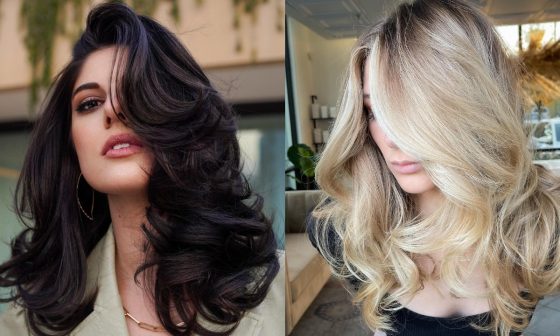Nowadays, adding hair extensions to give your hair some volume and vibrancy are very popular because it does the job. There are many different types of hair extensions such as clip-ins, sewins, tape in and so on, they all have different costs.
Buying a hair extension largely depends on the kind of hair used and the type of hair extension. Other factors like quality, quantity, and length of hair also affect how much hair extensions cost.
Kind of Hair Used
There are two classes of hair extensions and they are human hair and synthetic hair. While human hair is more expensive than synthetic hair, it is of better quality, looks more natural, and offers more styling options.
Human Hair Extensions
Human hair extensions are usually harvested from human donors. The natural protein in it gives it a more moisturized, softer, and silkier texture. Just like your natural hair, it can be easily cut or styled with heat and is less susceptible to matting or tangling.
Human hair extensions are quite pricey compared to their synthetic counterparts because of their production process —Multi-tonal technology is used. It is why human hair extensions are available in ultra-natural shades, usually ashy tones that allow toning and dying to match your hair. With proper care, human hair extensions can last for up to 24 months or more.
Apart from the look and texture, a burn test can help tell human hair apart from synthetic hair. When human hair is lighted, it burns slowly, having little or no smoke. After being burned, human hair easily ashes off.
Typically, the cost of buying a human hair extension alone can cost anything from ranges $75 to $400, without installation. This means that getting the hair extension installed by a professional will cost additional money.

Synthetic Hair Extensions
Synthetic hair, on the other hand, is much cheaper than human hair extension. However, some of its traits leave more to be desired.
For instance, it does not contain natural hair, only plastic, and special fibers. With the absence of natural protein, synthetic hair can’t retain moisture, and so, looks and feels dry. Sometimes, it is difficult to run a brush through synthetic hair, making it susceptible to tangling or matting.
Although they are made to look natural, there is usually an “unoriginal” look to synthetic hair.
Asides from that, there are certain things you can’t do with synthetic hair extensions as you would with human hair extensions.
For starters, you should never dye synthetic hair as the chemicals in hair dye will destroy it.
Synthetic hair does not like heat. No uhn! Don’t do it. The heat will do some damage to them. Without using curling irons, blow dryers, or flat irons, styling options are very limited with this hair class.
Even keeping synthetic hair in direct contact with sunlight for long periods is enough to reduce its already short lifespan, which is usually 2 to 3 months.
Unlike human hair, synthetic hair burns faster when lighted up, producing black smoke. The hair melts fast and clumps together. Synthetic hair extensions do not usually cost above $100. Yes, they are very affordable.
Type of Hair Extension
Another major thing that determines the cost of hair extension is the type of hair extension. The various types of hair extensions include Clip-in, Sew-in, Micro-link, Tape-in, and I-Tip. Let’s look at them closely.
Clip-in Extensions
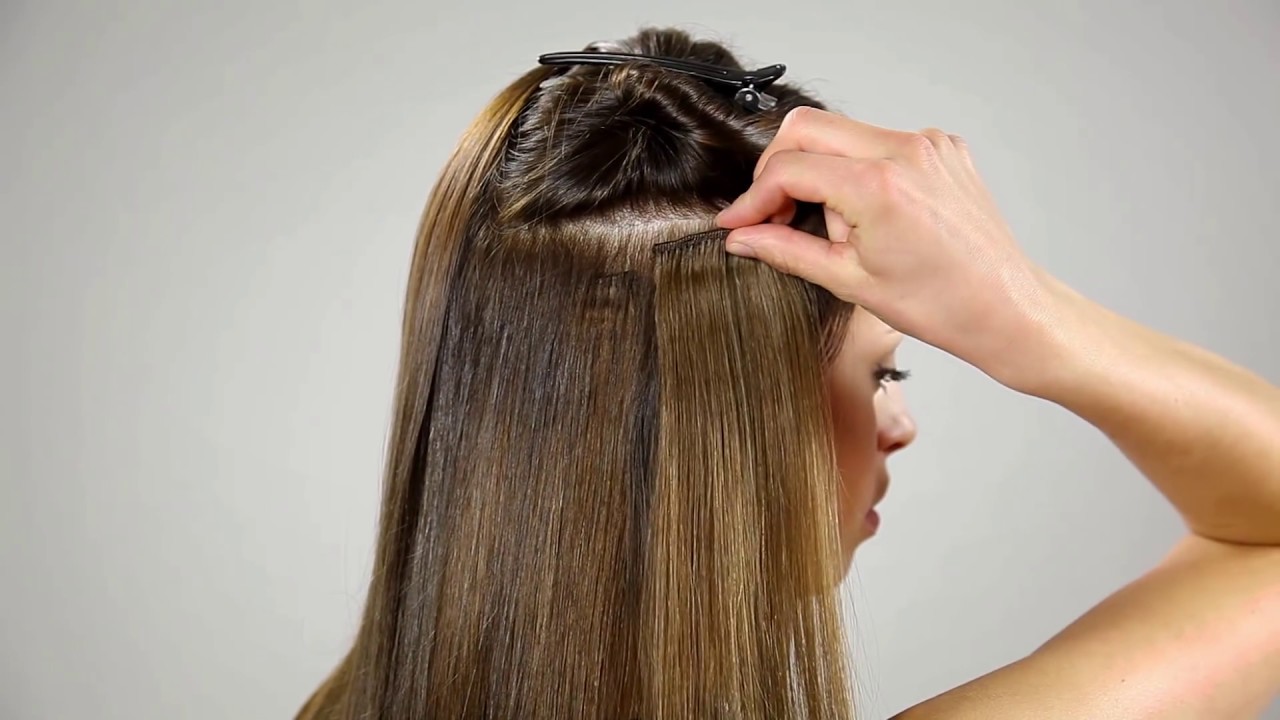
From the name, you can tell that this hair extension involves the use of clips. The hair strands are glued or sewed onto wefts that come with clips attached. You use the clips to secure the wefts of hair to your roots. So, they can be easily installed and removed without the help of a professional.
Clip-in extensions are a temporary option, and they don’t damage your natural hair when worn temporarily. They are perfect if you want to add length or volume to your natural hair. It saves you from spending a fortune on getting and maintaining a permanent hair extension.
Whether you intend to use clip-ins daily or for special occasions, be sure to take them off before you go to bed so that the hair does not get tangled. It will help prolong its lifespan. They can last up to 2 months, even if worn daily. Depending on the kind of hair used, among other things, a clip-in extension can cost between $100 and $500.
Sew-in Extensions
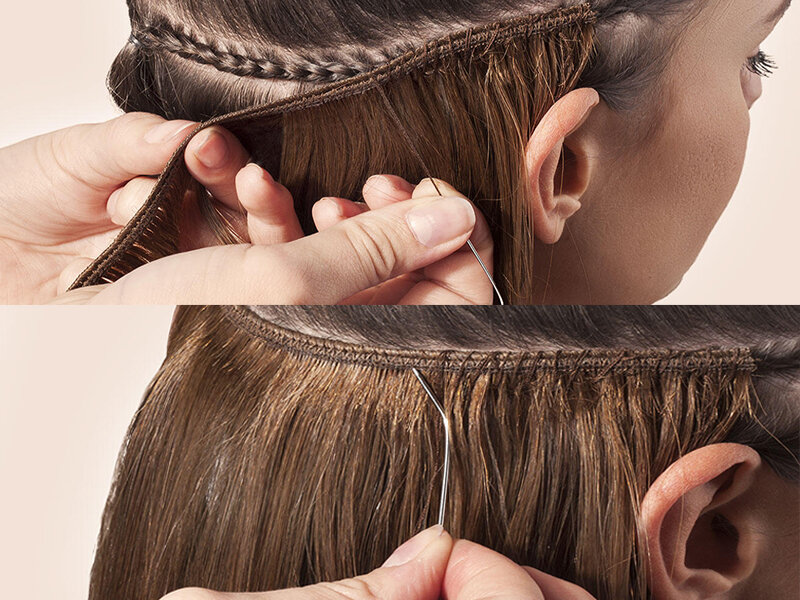
Sew-in extensions are sewed onto natural braids. The natural hair is braided close to the scalp, thus providing the base onto which the extension is attached. To install and remove sew-ins, call for the help of a professional. With someone else seeing to it, you are less likely to suffer hair damage.
Sew-ins are popular for their affordability and longevity. When installed and maintained properly, sew-ins can last for as long as 2 months. This type of hair extension doesn’t require the use of heat, so your hair is safe in that regard. However, depending on how sensitive the scalp is, the pressure from the braiding and sewing can irritate the scalp. In some other cases, the scalp tension poses the risk of hair breakage. Hence, the need for the services of a professional.
This method of installation is perfect for people with thick hair. There are braidless sew-ins (flat tracks or skip tracks) that are suitable for people with very thin hair. Braidless sew-ins use tiny silicone-coated beads to secure the wefts of sew-in to the natural hair. Generally, the cost of a sew-in hair extension ranges between $150 and $500.
Micro-link Extensions
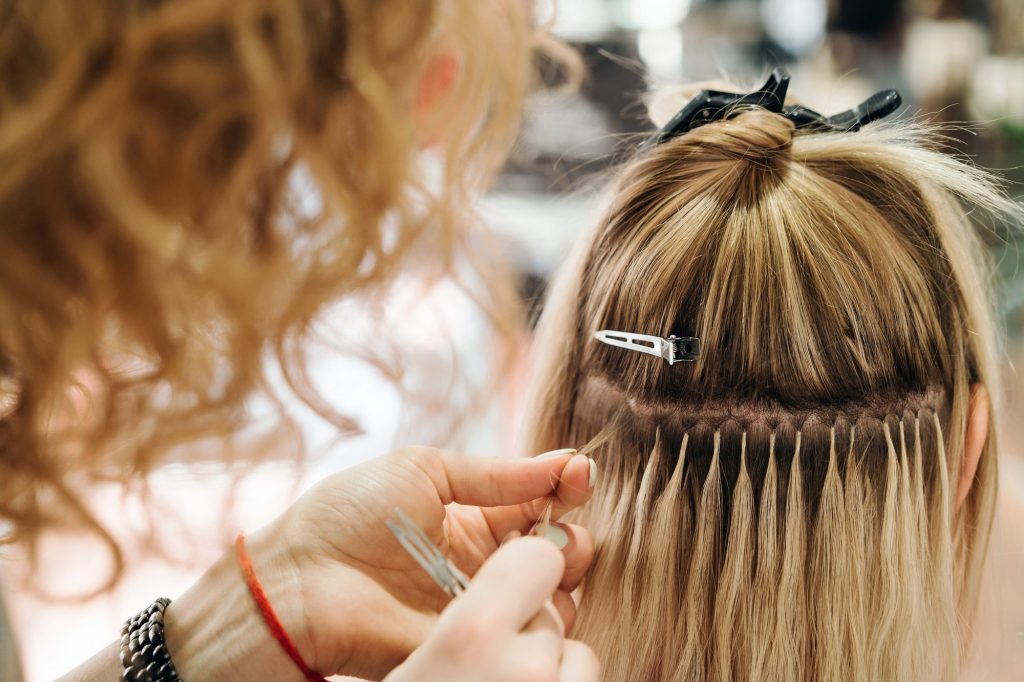
Also referred to as beaded/micro-ring/micro-bead hair extensions, micro-link hair extensions are installed using micro silicone beads to secure small wefts of hair to the natural hair. Beads with wefts of hair crocheted onto it are attached to the natural hair in small sections. A professional needs to be in charge of the installation and removal of micro-link hair extensions.
Micro-link extensions are safe for your hair because no heat is used to install them. While they can last for as long as 2 months, the beads need to be tightened to the roots monthly. On average, micro-links cost between $200 and $1000.
Tape-in Extensions
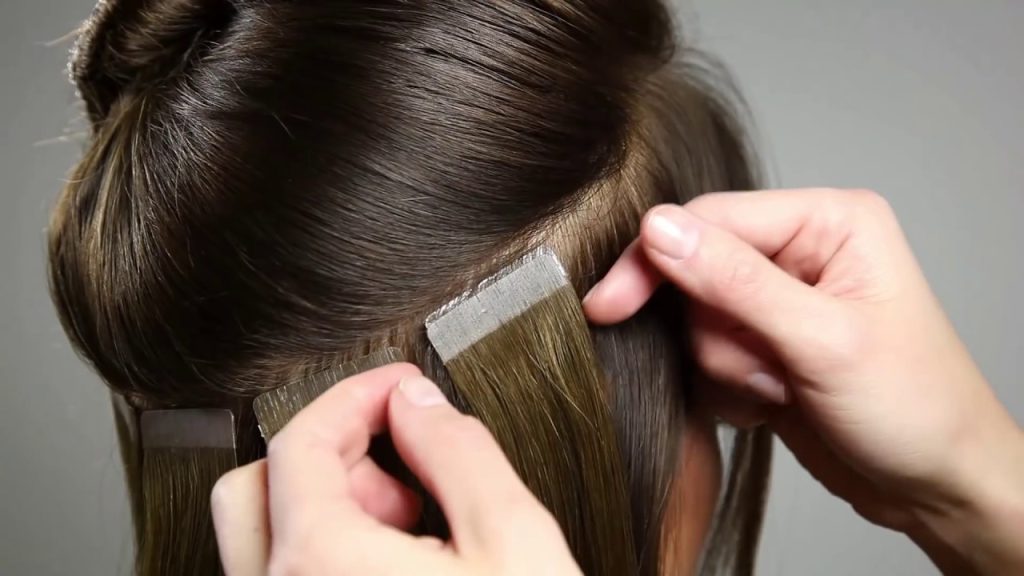
This type of hair extension is attached to the hair using an adhesive. Tape-ins come as small sections of hair attached to double-sided keratin tapes. Your natural hair is placed between two sections of tape. You will agree that you need a professional to install and remove tape-ins.
Of all the hair extension types, tape-ins lay flatter on the roots. Thanks to the thin and flat tape, the attachment is concealed, giving your hair a seamless look. However, the adhesive poses the risk of hair damage in the long run. So, it is important not to install or remove tape-ins by yourself. If you are a professional, you will know what to do, of course.
Tape-in extensions are considered a semi-permanent option that can last for up to 2 months before removal and subsequent re-installation. Pay special attention to the hair products used because regular hair shampoo, conditioners, and oil-based products will cause the adhesive to slip down the hair, damaging the hair. Tape-in extensions can cost between $200 and $1000, depending on the hairdresser, among other factors.
I-Tip Extensions
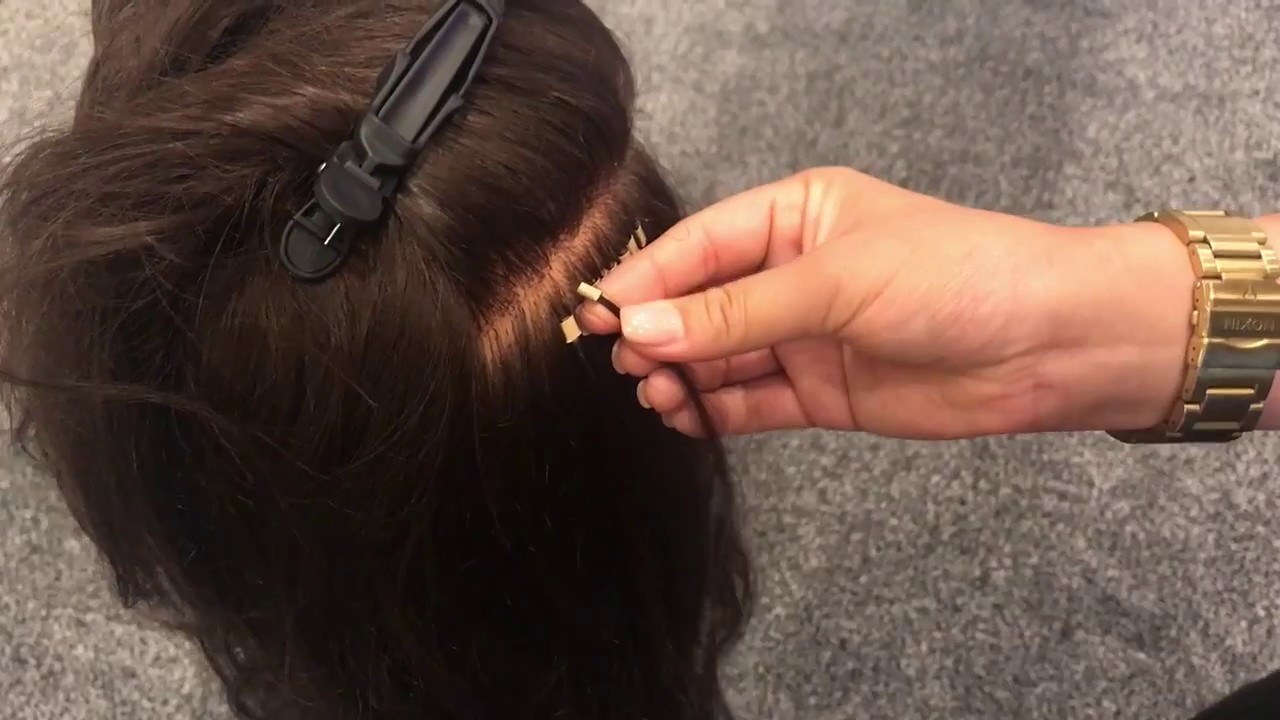
I-Tips are similar to micro-links in that they both use micro-beads. I-Tip hair extensions are strands of hair held together at the tip with keratin. The glued tip looks like a shoestring. This hair is then attached to the natural hair using micro-beads. When properly installed, I-Tips are almost undetectable, heightening a natural look.
As there is no need for heat or adhesive, and no braiding is required, I-Tips are easily the safest type of hair extension on the market. They can last longer than other extensions, up to 4 months. You just have periodic visits to tighten the beads closer to the roots because new growth is bound to move them further down the hair strands.
I-Tips must be installed by a professional. They cost between $300 and $900. Though they appear pricey at first glance when you consider how long they last, it’s a win-win, cost-effective hair extension option.
Final Words
In summary, the cost of hair extensions depends on whether it is human hair or synthetic hair, whether it is a clip-in, sew-in, micro-link, tape-in, or I-Tip hair extension.
It also depends on how much professional maintenance it requires, the expertise of the professional, and the location of the salon. Service charges differ across locations and individual hair salons.
What hair would you like to get and why?



